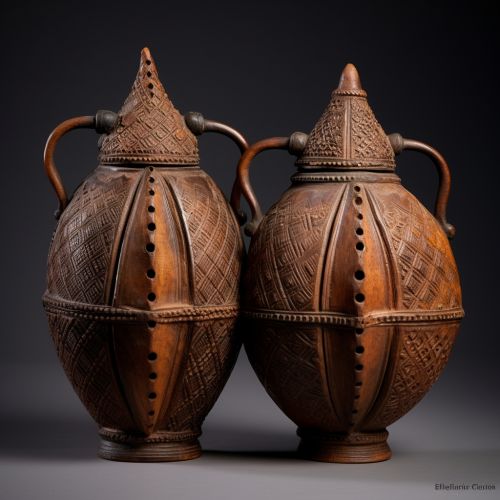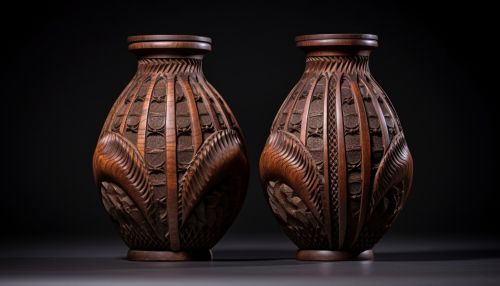Krotala
Overview
Krotala are a type of ancient percussion instrument, similar to modern day castanets. They were used in various cultures around the world, but are most commonly associated with Ancient Greece and Rome. Krotala were usually made of wood, bone or metal and were played by being struck together to produce a rhythmic sound.


History
The earliest known use of Krotala dates back to the Bronze Age, where they were used in religious ceremonies and rituals. They were often associated with the worship of various deities, particularly those related to music and dance. The use of Krotala in these ceremonies was believed to invoke the presence of the gods and bring about divine favor.
In Ancient Greece, Krotala were commonly used in the performance of dithyrambs, a type of hymn dedicated to the god Dionysus. They were also used in the performance of Greek tragedies, where they were used to create dramatic effect and emphasize the rhythm of the spoken verse.
In Ancient Rome, Krotala were used in a similar manner, often being played during religious festivals and theatrical performances. They were also used in the Roman military, where they were used to keep time during marches and other military exercises.
Design and Construction
Krotala were typically made from wood, bone or metal, and were often intricately carved or decorated. They were usually oval or rectangular in shape, and were designed to be held in the hand and struck together to produce sound.
The design of the Krotala varied depending on the culture and period in which they were used. In Ancient Greece, they were often decorated with images of gods and goddesses, while in Rome they were more likely to feature geometric patterns and abstract designs.
The sound produced by the Krotala was dependent on the material from which they were made. Wooden Krotala produced a softer, more resonant sound, while those made from bone or metal produced a sharper, more piercing sound.
Use in Music
In addition to their use in religious ceremonies and theatrical performances, Krotala were also used in music. They were often played in conjunction with other instruments, such as the lyre or the aulos, to create a rhythmic accompaniment.
The playing of the Krotala was often associated with dance, and they were frequently used to keep time during performances. The rhythmic patterns produced by the Krotala were often complex and varied, reflecting the intricate footwork and movements of the dancers.
Modern Day Use
While Krotala are no longer commonly used in modern music, they have had a lasting impact on the development of percussion instruments. The modern day castanets, used in Spanish flamenco music, are directly descended from the Krotala.
In addition, the use of Krotala in ancient music has been studied by musicologists and historians, who have used them to gain insight into the musical traditions of ancient cultures. Replicas of Krotala are often used in historical reenactments and performances of ancient music.
